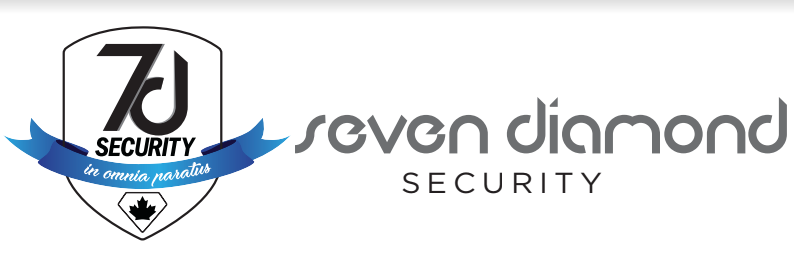You are one step closer to becoming a Licensed Security Guard in Ontario. Having a security licence will allow you to work with the 7 Diamond Security Team.
HOWEVER, if you are interested to work in any of our other divisions TODAY, feel free to apply on our Careers Page
HOWEVER, if you are interested to work in any of our other divisions TODAY, feel free to apply on our Careers Page
Courses Available Through Our Accredited Partnerships:
Basic Security Guard Training Course (see below for information)
First Aid + CPR Certification
Use of Force - Handcuffing & Baton
Crisis Management
Effective Communication
Basic Security Guard Training Course (see below for information)
First Aid + CPR Certification
Use of Force - Handcuffing & Baton
Crisis Management
Effective Communication
This is a 40 Hour content course, which can be completed from anywhere, including the comfort of your home, at your own pace. Course content is listed below.
- Chapter 1. Introduction to the Security Industry
- Section 1: History Of Security
- Section 2: Different Jobs In The Security Industry
- Section 3: Knowledge, Skills, And Abilities Needed To Perform Well
- Section 4: Job Specifications, Activities, And Demands Of A Security Guard
- Section 5: Security Industry Background And Changes In The Industry
- Chapter 2. PSISA - Code of Conduct
- Section 6: Private Security And Investigative Services Act, 2005 (Psisa)
- Section 7: Code Of Conduct
- Chapter 3. Basic Security Procedures
- Section 8: Surveillance Techniques
- Section 9: The Basic Elements Of Security
- Section 10: Drug Effects, Substance Abuse And Related Drug Paraphernalia
- Section 11: Confidentiality
- Section 12: Procedures For Handling, Storing, Disseminating And Destroying Information Of A Personal Nature
- Section 13: Personal Information Protection And Electronic Documents Act (Pipeda) Regarding The Protection Of Personal Information
- Section 14: Municipal Freedom of Information and Protection of Privacy Act (MFIPPA)
- Chapter 4. Note Taking, Statements, Report Writing and Intelligence
- Section 15: Note Taking
- Section 16: Witness Statements
- Section 17: Report Writing
- Section 18: Intelligence
- Chapter 5. Health and Safety
- Section 19: Occupational Health And Safety Act
- Section 20: Workplace Hazardous Materials Information System (Whmis)
- Chapter 6. Emergency Response Preparation
- Section 21: Identify The Criteria’s Of A Potential Emergency
- Section 22: Emergency Response Procedures
- Section 23: The Potential Roles Of A Security Guard In Emergency Situations
- Section 24: How To Implement Duty Of Care
- Chapter 7. Canadian Legal System
- Section 25: How Laws Are Made
- Section 26: How Laws Are Managed
- Section 27: The Process That Leads To A Person Being Accused, Charged And Convicted.
- Section 28: Canadian Criminal Court System
- Chapter 8. Evidence
- Section 29: Types Of Evidence
- Section 30: The Ontario Evidence Act And Canada Evidence Act That Pertain To Admissible Evidence
- Section 31: Commonly Accepted Approaches To The Collection, Preservation Handling And Sealing Of Audio/Visual Materials
- Section 32: Presentation Of Evidence
- Chapter 9. Legal Authorities
- Section 33: Important Legislation
- Section 34: Criminal Code Of Canada
- Section 35: Elements Of Tort Law In Security Situations
- Section 36: Municipal By-Laws
- Chapter 10. Effective Communications
- Section 37: Oral And Written Communication Skills
- Section 38: Tactical Communication
- Section 39: Discuss The Following Interpersonal Skills
- Chapter 11. Sensitivity Training
- Section 40: Recognizing One’s Own Biases And How These Can Influence Situations
- Section 41: Recognizing The Impact Of Mental, Physical, Cultural And Sexual Differences On Situational Dynamics
- Chapter 12. Use of Force Theory
- Section 42: Authority To Use Force Under The Criminal Code Of Canada
- Section 43: How To Act Under Stress And Maintain Composure
- Section 44: Positional Asphyxia And Excited Delirium
We Would Love To Work With You On Your Next Event!
Telephone |
|
© 2024 Seven Diamond Group of Companies Inc.
